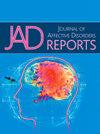女教师的抑郁症状与职业倦怠:工作动机、心理弹性和幸福感的影响
Q3 Psychology
引用次数: 0
摘要
背景:职业倦怠和抑郁是职业压力的长期后果,特别是在女性教育工作者中,她们不仅比男性同行承受更大的工作量压力,而且更严重的情绪衰竭和社会环境干扰带来的冲突。摘要本研究旨在探讨女教师心理健康(职业倦怠、抑郁、幸福感)与工作相关因素(工作动机、教师幸福感和心理弹性)的关系,并找出影响教师抑郁和职业倦怠的关键因素。方法:参与者是匈牙利女教师(N = 520),他们完成了一项在线调查,包括这些变量的测量。数据分析采用描述性统计、相关分析和逐步回归分析。结果:职业倦怠和抑郁症状除了与教师总体幸福感和职业幸福感、内在动机和识别动机、教师心理弹性维度呈显著负相关外,还与教师心理弹性维度呈显著正相关。逐步回归发现,一般幸福感、动机、外在社会动机、家庭凝聚力和精神弹性这5个变量对女教师抑郁症状有显著的预测作用(R²= 0.328)。一般幸福感、动机、职业幸福感、内在动机和个人胜任力显著预测职业倦怠(R²= 0.603)。结论:与抑郁的主要预测因素相比,职业倦怠更倾向于由工作和个人因素来预测,而不是由社会、家庭和精神因素来预测。讨论了干预措施的实际意义。本文章由计算机程序翻译,如有差异,请以英文原文为准。
Depressive symptomatology and burnout among female teachers: An investigation of the contributions of work motivations, resilience and well-being
Background: Burnout and depression are long-term consequences of occupational stress, especially among female educators who experience not only more stress from workload than their male counterparts but also greater levels of emotional exhaustion, and conflicts from social environment interference. The purpose of this study was to examine the relationships between mental health (burnout, depression, well-being) and job-related factors (work motivation, teacher well-being and resilience) in a sample of female teachers, and to identify the key predictors of teachers’ depression and burnout.
Methods: Participants were Hungarian female teachers (N = 520) who completed an online survey that included measures of these variables. Data were analyzed using descriptive statistics, correlation and stepwise regression analyses.
Results: The results revealed, in addition to a strong correlation between burnout and depressive symptomatology, both were negatively correlated with general and professional well-being, intrinsic and identified motivations, and dimensions of teacher resilience, while positively correlated with amotivation and extrinsic motivations. Stepwise regression revealed that five variables significantly predicted depressive symptoms in female teachers (R² = 0.328): general well-being, amotivation, extrinsic social motivation, family cohesion, and spiritual resilience. Burnout was significantly predicted by general well-being, amotivation, professional well-being, intrinsic motivation, and personal competence (R² = 0.603).
Conclusions: These findings suggest that in contrast with the main predictors of depression, burnout was more predicted by work-related and personal factors, instead of social, familial and spiritual ones. Practical implications for interventions are discussed.
求助全文
通过发布文献求助,成功后即可免费获取论文全文。
去求助
来源期刊

Journal of Affective Disorders Reports
Psychology-Clinical Psychology
CiteScore
3.80
自引率
0.00%
发文量
137
审稿时长
134 days
 求助内容:
求助内容: 应助结果提醒方式:
应助结果提醒方式:


